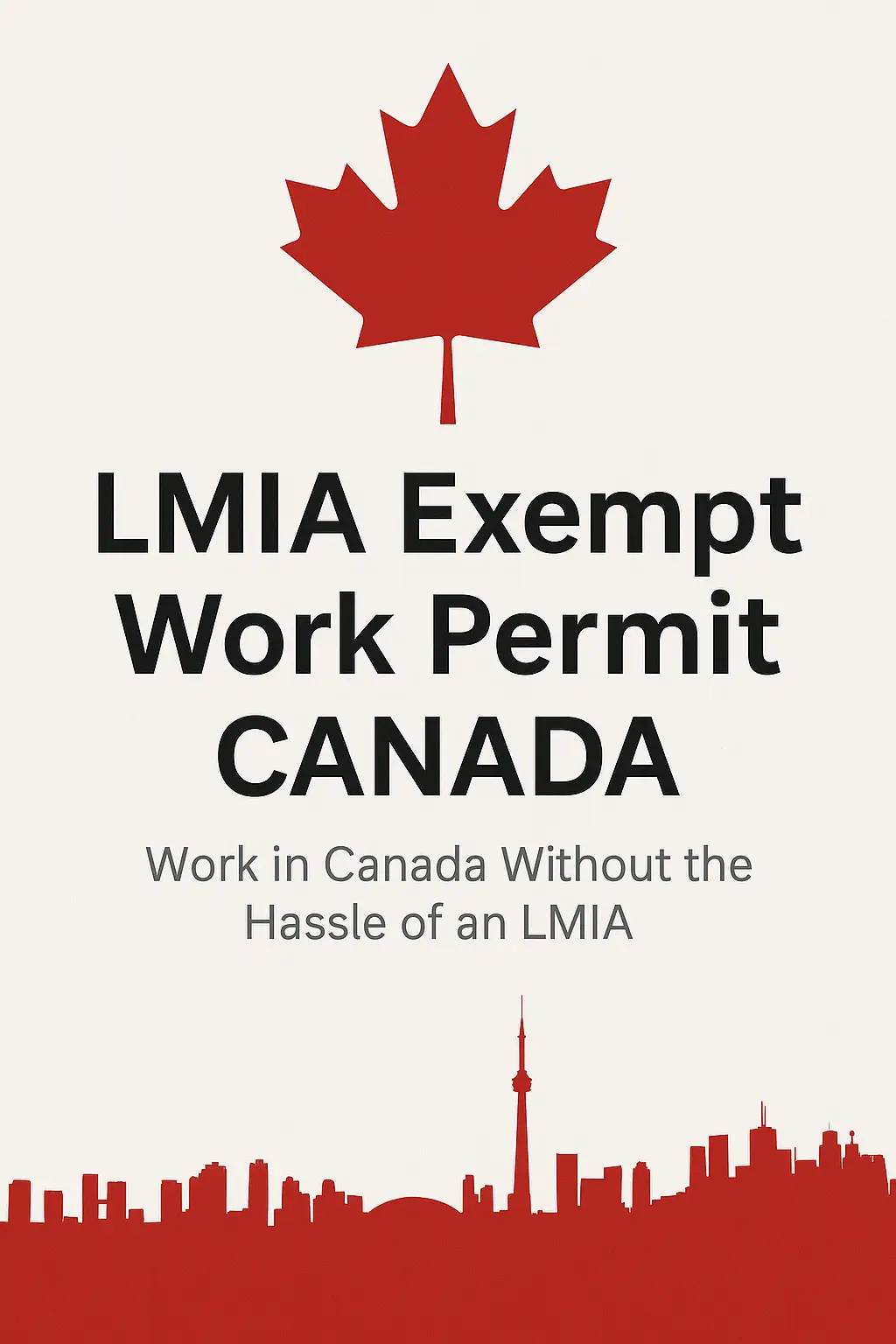Dreaming of working in Canada without the hassle of a Labour Market Impact Assessment (LMIA)? The LMIA-Exempt Work Permit offers a streamlined path for foreign workers to join Canada’s workforce in high-demand roles. Part of the International Mobility Program (IMP), these permits bypass the LMIA process, saving time and costs for employers and workers alike. This SEO-friendly guide, perfect for your WordPress blog, covers eligibility, key categories, and application steps for the LMIA-Exempt Work Permit in 2025, optimized for keywords like “LMIA-exempt work permit Canada” to boost your site’s ranking.
What is an LMIA-Exempt Work Permit?
A Labour Market Impact Assessment (LMIA) is a document that proves a Canadian employer couldn’t find a local worker for a job, typically required for most work permits. However, LMIA-exempt work permits, managed under the International Mobility Program (IMP), allow employers to hire foreign workers without this step, promoting Canada’s economic, social, and cultural interests. These permits are either closed (employer-specific) or open (job/employer-flexible), offering flexibility for workers in specific categories.
Why Choose an LMIA-Exempt Work Permit?
- Faster Processing: Skip the lengthy LMIA process, with some permits (e.g., NOC TEER 0 or 1 roles) processed in as little as two weeks via the Global Skills Strategy.
- Job Flexibility: Open work permits allow you to work for any employer, while closed permits tie you to a specific role without LMIA delays.
- Path to PR: Many LMIA-exempt permits align with pathways to permanent residency, like Express Entry or Provincial Nominee Programs (PNP).
- Family Benefits: Spouses and dependents may qualify for work or study permits, keeping families together.
Who Qualifies for an LMIA-Exempt Work Permit?
Eligibility depends on specific categories under the IMP. Here are the most common LMIA-exempt streams:
- International Agreements:
- Significant Benefit to Canada:
- Reciprocal Employment:
- Caregivers:
- Charitable/Religious Work:
- Provincial Nominees:
- Innovation Stream Pilot:
Note: Even with an LMIA exemption, a work permit is still required to work legally in Canada.
How to Apply for an LMIA-Exempt Work Permit
- Secure a Job Offer: Obtain a job offer from an eligible employer (e.g., GHP company, CUSMA-eligible firm) or qualify for an open work permit (e.g., IEC, spousal permit).
- Gather Documents:
- Submit Online: Apply via the IRCC Secure Account or Employer Portal (for employers submitting offers).
- Pay Fees: Work permit fees apply (e.g., $155 CAD for processing, plus $100 for open work permits).
- Await Approval: Processing times vary, but high-skilled roles (NOC TEER 0/1) may qualify for expedited processing.
Pro Tip: Consult a trusted immigration lawyer like AKM Law to ensure accuracy and avoid rejections.

